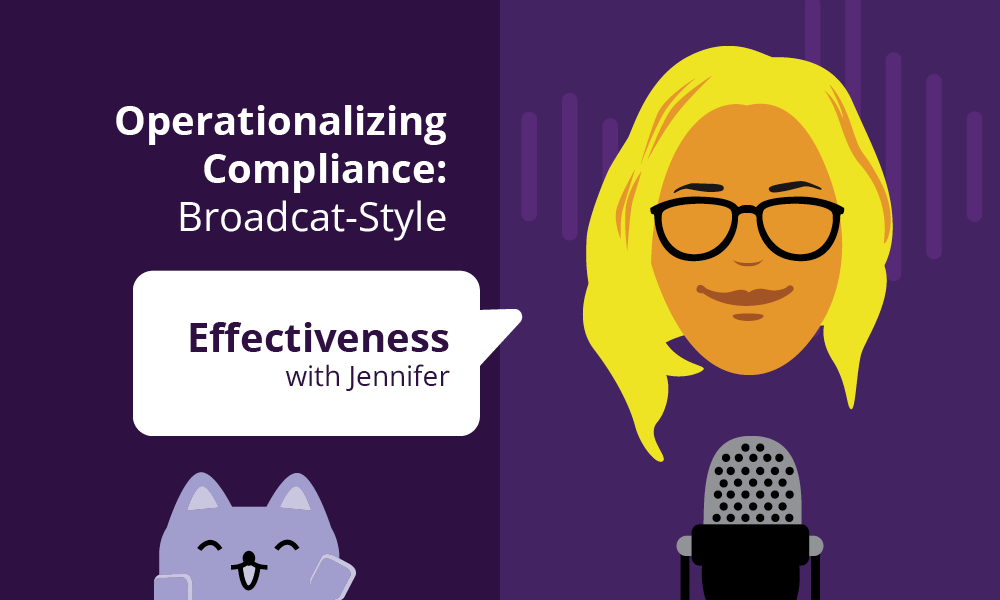Welcome to a special five-part podcast series on Operationalizing Your Compliance Program, sponsored by Broadcat LLC. Over this series, I visit with Jennifer May, Director of Compliance Advisory; Taylor Edwards, Director of Sales; Xinia Pirkey, Design Manager; Alex Klingelberger, Chief Executive Officer (CEO) and Jaycee Dempsey, Director of Customer Success. We consider a variety of ways to more fully operationalize your compliance regime, including the design and effectiveness of your communications, why the operationalization of compliance is a team sport, why simply data is not the answer and how to avoid being overwhelmed. In Part 1, I am joined by Jennifer May to consider what is compliance program effectiveness.
We began with one of the most well-worn words in compliance that still challenges compliance professionals, that being ‘effectiveness’. May said that it is not about getting a hundred percent completion on some sort of training module, which unfortunately in many ways has become the benchmark or the metric used. Instead, it is about getting information to individuals so you can get the right outcomes. Effectiveness is not represented by clicks but rather it is about outcomes.
You should start by identifying your highest risk activities. Begin by asking questions, which might include “Are you having good (or bad) outcomes when it comes to those risky activities? And if you’re not, why are you not? Do your employees understand what it is that they are supposed to be doing and when they are supposed to be doing it? What are those behaviors and the outcomes that we want to change or need to change to get to the appropriate outcomes?”
By asking such questions and delivering training and communications on those topics and areas, you begin to see a shift in people. It is not about a click; the result is compliant behavior. Shifting the focus and conversation to what those outcomes are allows you to start thinking about training in a different way and you can start to see how effectiveness can begin to be impacted by solid training that focuses on outcomes.
May analogized it to a closed-book or open-book test. She does not believe employees should think of compliance as a “closed-book test.” Compliant behavior is not something that you should keep behind a curtain. Your information should be out there and available to any employee who needs it in the moment that they need it. If there is a risk to manage; that is when they will need it. But if your employees need such information “the next time and the next time, and every time subsequent to that, then that’s okay too. There’s no reason why keeping that compliance information hidden or keeping it locked away and making them remember it is going to make them more effective or, more appropriately, compliant in their behaviors. Providing that information upfront and always when they need it, is really the key.”
Obviously, compliance folks cannot be everywhere all at once. Your compliance function may be a single person or a small team. Further, they cannot morph themselves into covering every single risk and every single moment of the organization every time. That is why the closed-book test does not do them any good as they cannot “be standing over someone’s shoulder every time talking about why then need to do something, what they need to do and how they need to do it.” Keep an open book approach and make compliance information openly available whenever employees need it.
We concluded with a few thoughts on credibility for your compliance program, which May believes is a very important concept for compliance. and had an interesting take on that issue. She said that credibility “honors employees as professionals in the work that they are doing.” This ties into “being open about the resources that are available, encouraging them to use them, encouraging them to find them, and perhaps, most importantly, encouraging them to reach out when they have a question.” May sees all this as a part of that credibility. This leads to engagement on a level which is about what they do and demonstrating that you, as the compliance professional, are there to support them.
Join us in Part 2 where we look at program design.
Resources
For more information, check out Broadcat here.



